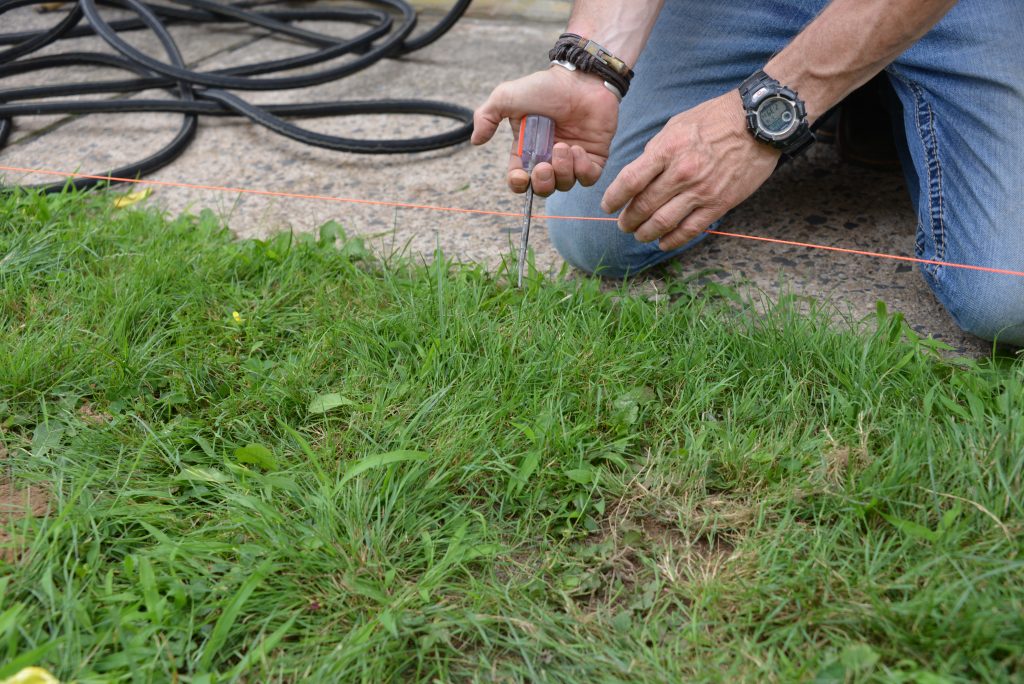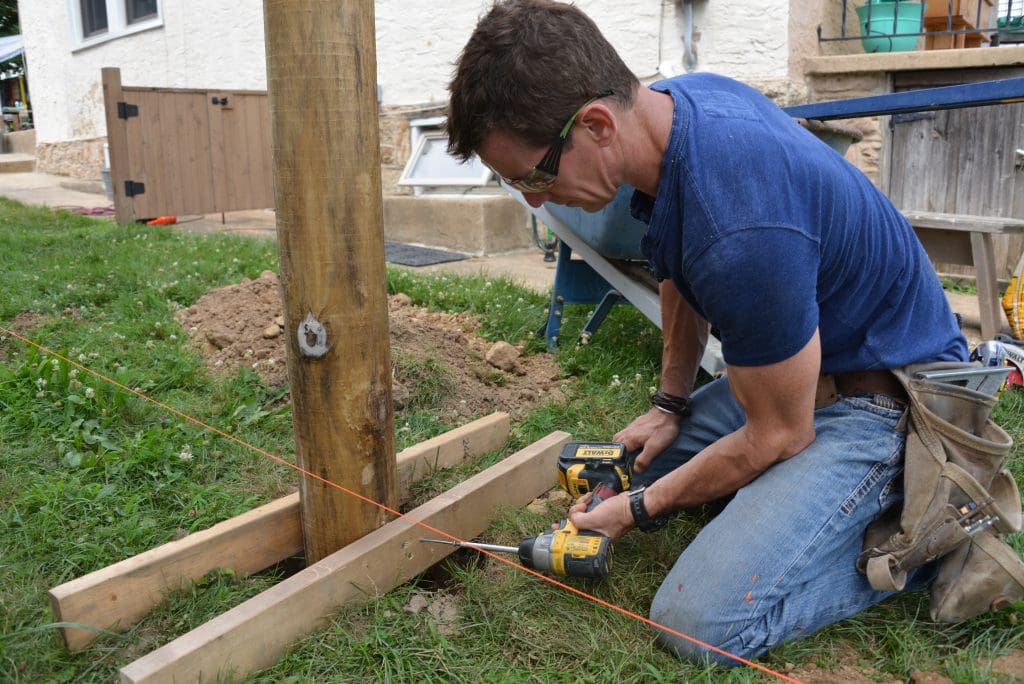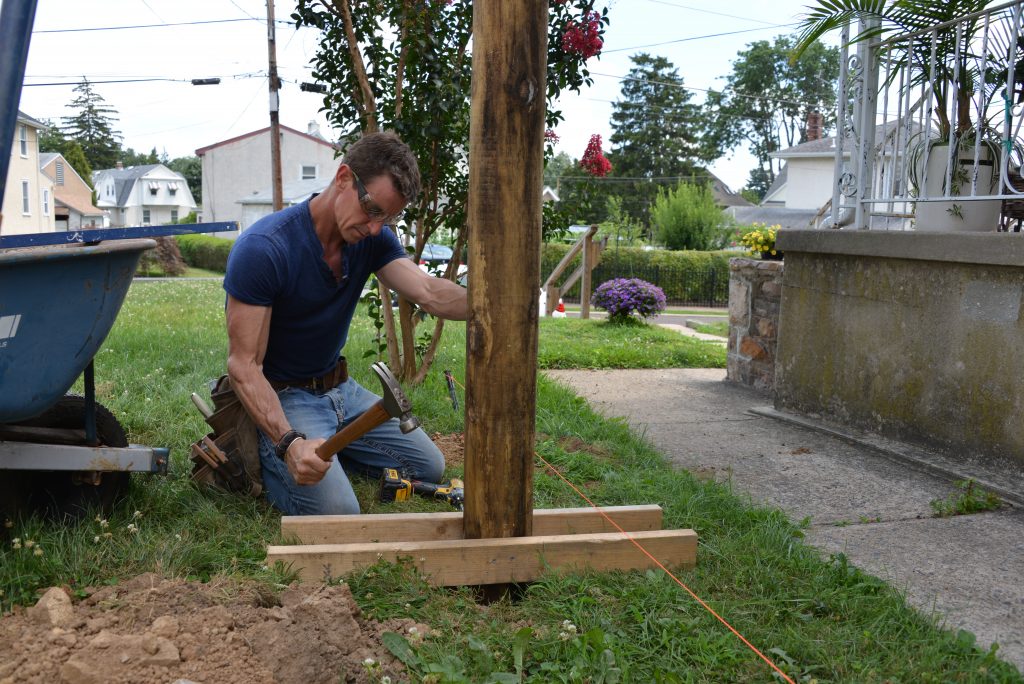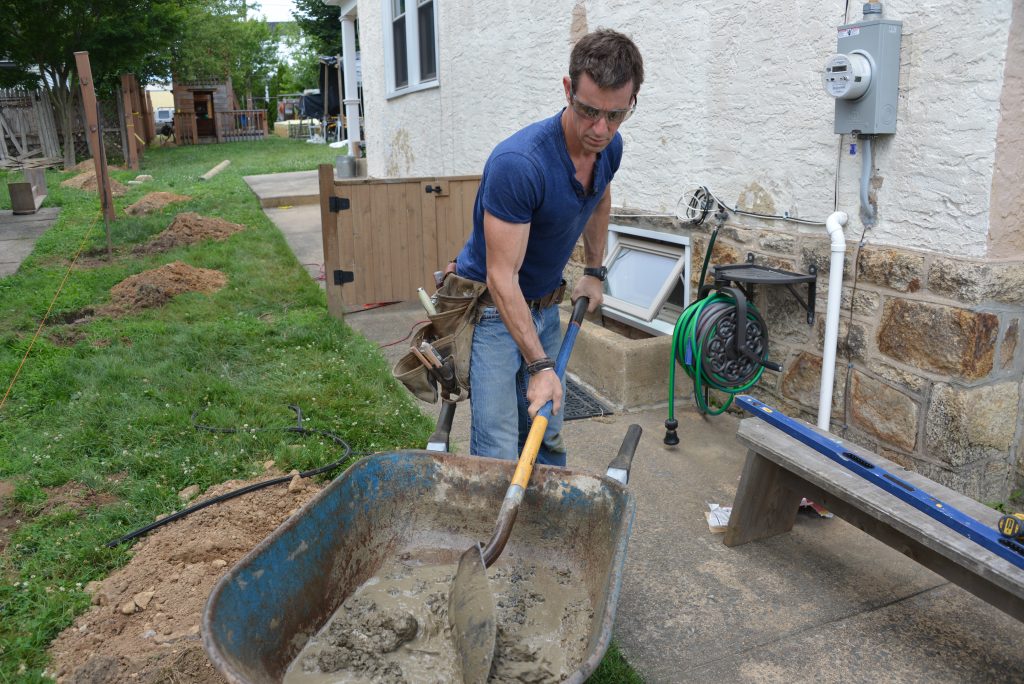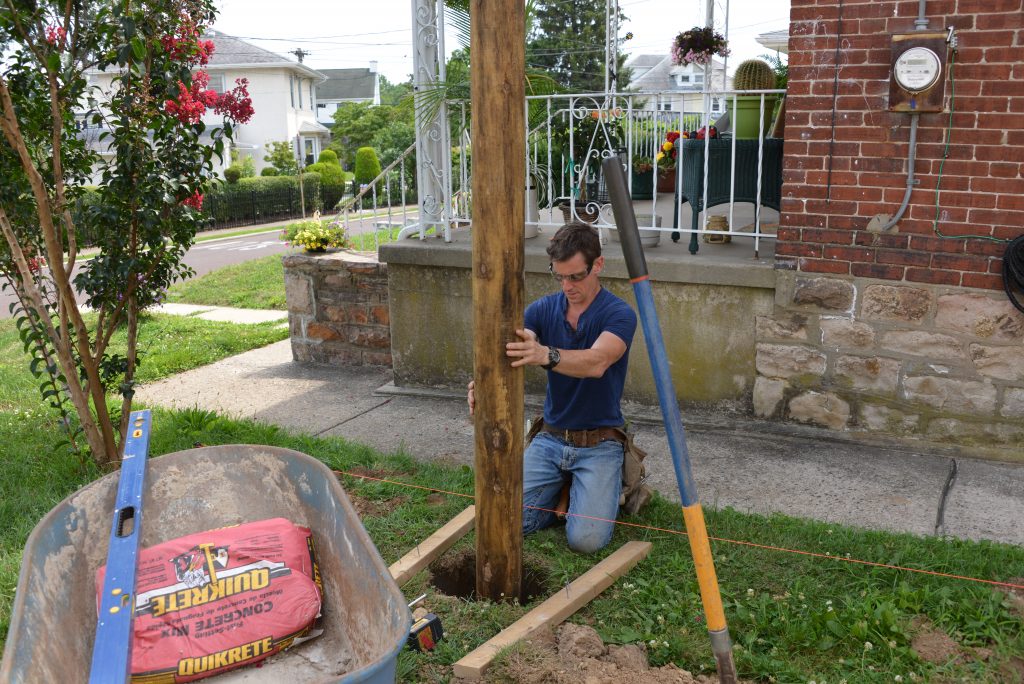
Among the many reasons I like to build a fence with wood is that I can line up the fence posts straight, and can count on those posts staying straight and standing solid in the ground.
Step 1. Pulling a string
The string is really called ‘mason’s line.’ Pulling it tight between the two points where the posts will go is the best way to build a fence straight and true. The longer the run, the tighter the string needs to be to stay straight.
I use a knot called a trucker’s hitch to get it tight and keep it taught (VIDEO: How to tie a trucker’s hitch).
The downside to a string is that it is 100% in the way about 100% of the time. It’s what strings do. It’s not their fault.
To hold it out of the way to dig a hole for example, I pull it to the side, sink my scratch awl into the ground and then hook the string on it.
Step 2. Set the location of the first and last posts.
I start every fence I build by determining the locations of the first and last posts in each run. On a square or rectangular yard, for example, this is usually the corners of the property. I set those posts first.
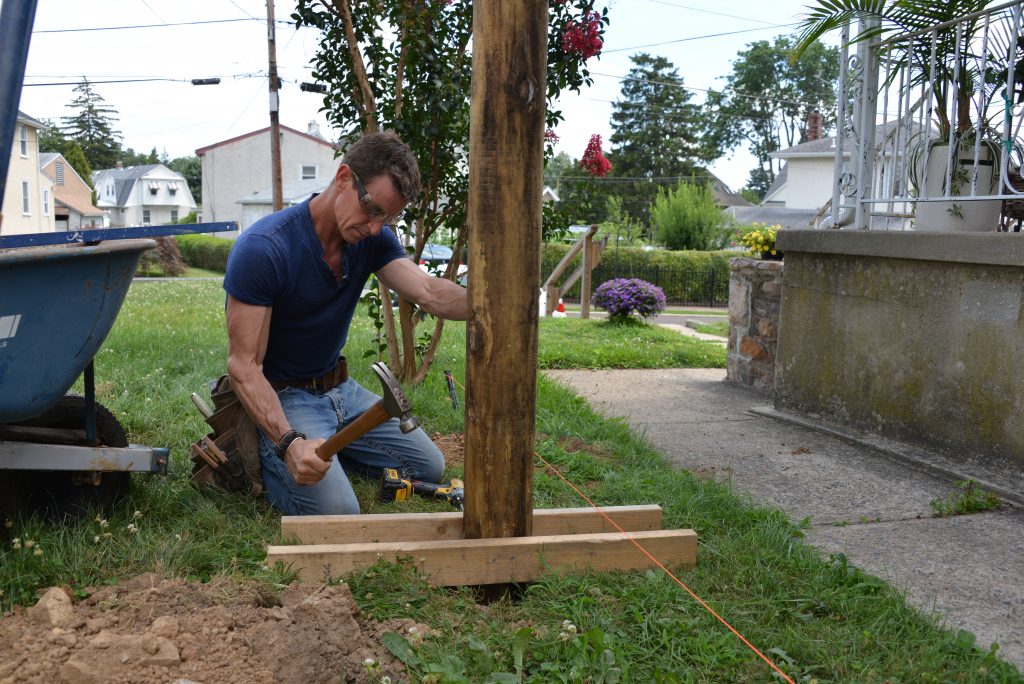

Step 3. Dig in.
Where I live in Pennsylvania, posts should be no less than 36 inches deep. This is to protect the post and structure from everything from frost to bearing-up in bad weather like snow storms and high winds.
I pour a few inches of pea gravel at the base of the hole to give ground water a place to move, then pour a concrete footing around the base of the post. I usually use a fast-setting mix for end posts.


Step 4. Map the rest of the posts.
Before digging for the rest of the posts, I map out their locations. Store-bought fence panels are typically 8-feet long. However, the yard may not be equally divisible by 8.
When you build a fence—in my view, anyway—avoid a stubby little fence sections near a corner or gate. One trick is to start laying out the post locations in the center of the run. That way the end panels on each side of the yard should be suitably large to look good and be the same size as each other.
Another trick is to adjust the position of, or widen a gate so your end panels end up even.
A third approach is to get artistic. If posts stack close to each other, add a ‘decorative’ post to transition around the corner (set it like a regular post). It’s a design trick I use when reality starts to trump intention. The hack (and all good carpenters do this) is to creatively make the mistake look like it’s meant to be there.
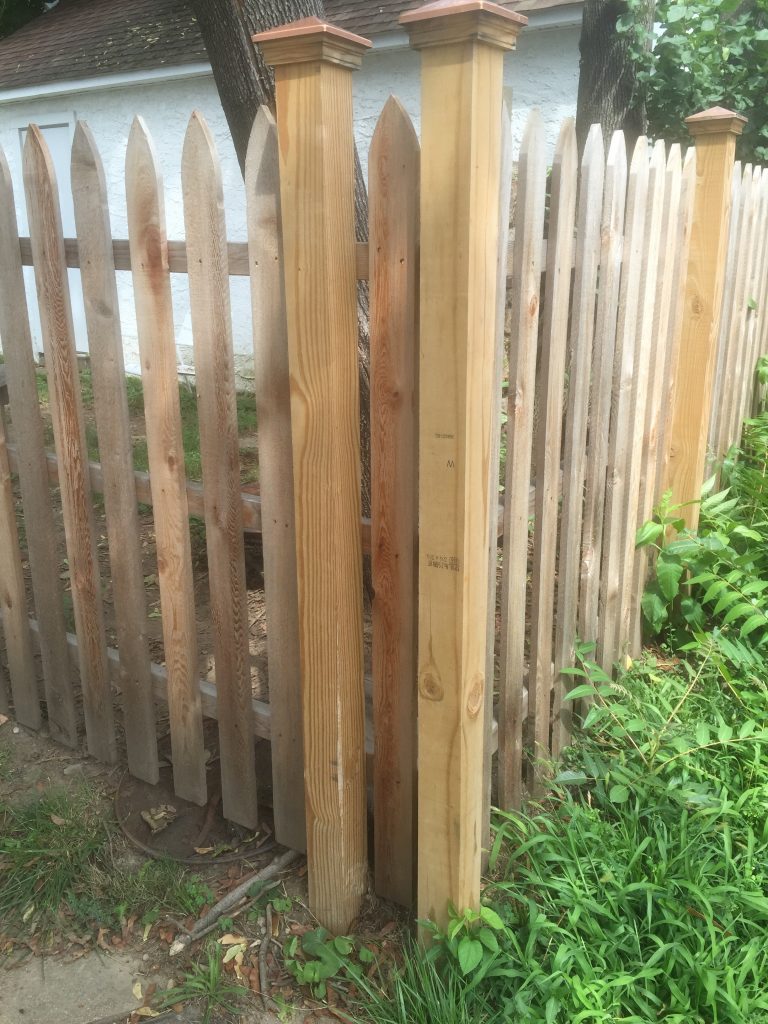

Alternatively, you may want to center an entire panel in the middle of the run. There are lots of approaches, the main idea is that you want the end panels to be approximately the same size as each other.
Step 5. Brace for it.
To keep posts straight in line with each while the concrete cures in the bottom of the hole I brace the bottoms of the posts and run a temporary 2×4 rail (I call it a ‘stretcher’) across the top.
Step 6. Fasten those posts.
Once the concrete is cured, I remove the stretchers, fill the hole and start installing the fence boards. Screws work better than nails for stretchers.
Before fastening stretchers, I give them some solid slams into soft ground to help them stay still.
Note about dry concrete in the hole
Fence companies are notorious for pouring dry concrete in the hole then assuming ground water will eventually soak it and cause it to cure. While this may be true, it still takes a long time. And in the meantime, wind storms, super cells, even large dogs…whatever…can wreak havoc on under-supported fence posts.
I always mix and pour concrete then let it cure overnight before back-filling the hole.
The result is a rockin’ set of super-straight and awesomely plumb fence posts that stand tall and please the eye for years to come.

